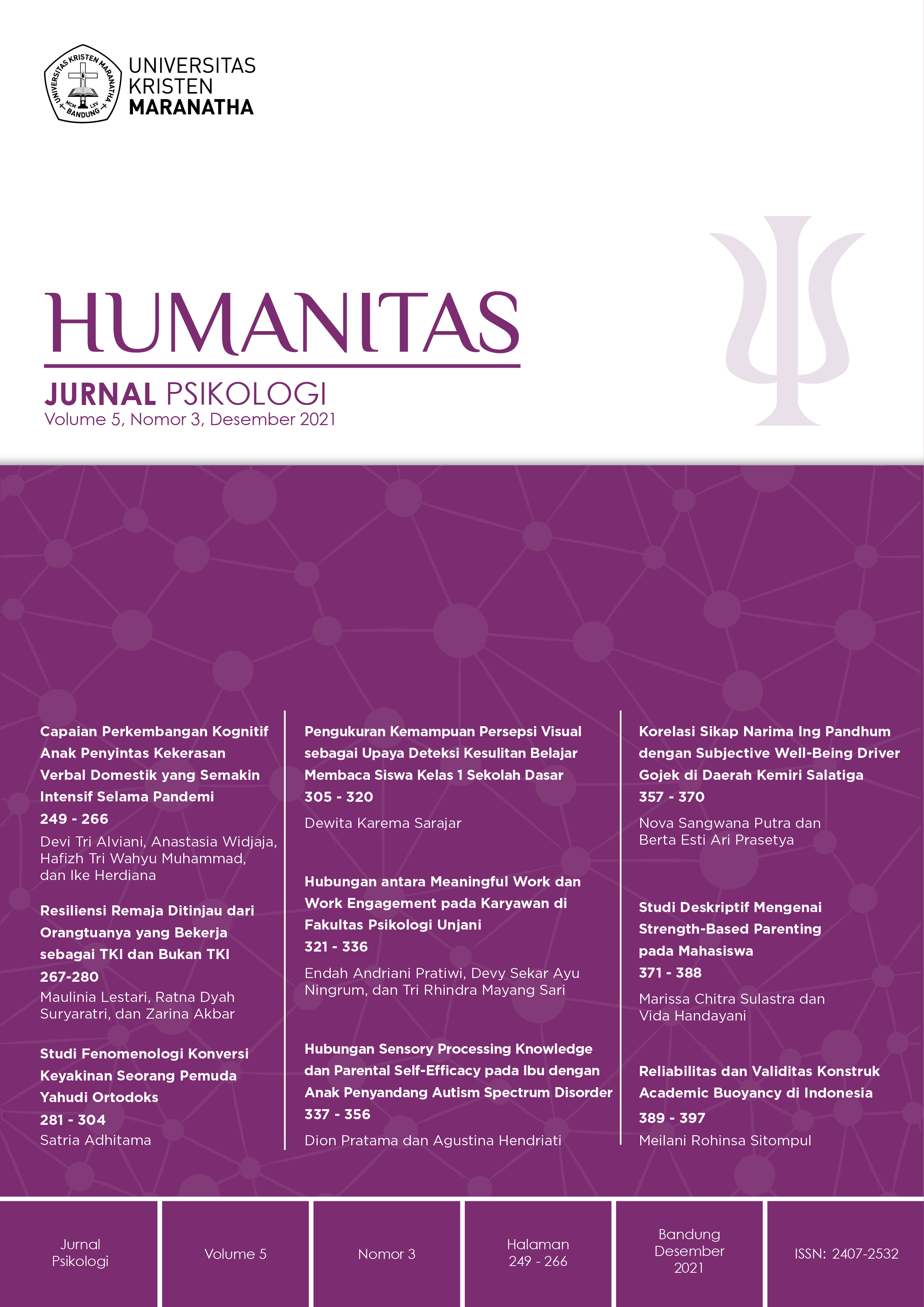Pengukuran Kemampuan Persepsi Visual sebagai Upaya Deteksi Kesulitan Belajar Membaca Siswa Kelas 1 Sekolah Dasar
Main Article Content
Abstract
Visual perception ability is the ability to interpret and organize visual information. This ability is related to the ability to interpret visual stimuli that play a role in the child's learning process, one of which is learning to read. The purpose of this study was to measure and describe the visual perception ability of grade 1 elementary school students as an effort to detect reading difficulties. Measurement of visual perception uses the Marianne Frostig Developmental Test of Visual Perception (Frostig Test) which measures aspects of visual perception such as eye and motor coordination, hidden shape recognition, consistent shape perception, shape perception in various positions and spatial relationships. Data was collected by calculating the Frostig test scores presented to the subjects. The subjects in this study were 64 children aged 6-8 years who were registered as grade 1 elementary school students. The results showed that the low scores on several subtests of the Frostig Test could be an indication of difficulties in learning to read in students.
Keywords: visual perception, reading difficulties, frostig test
Keywords: visual perception, reading difficulties, frostig test
Downloads
Download data is not yet available.
Article Details
How to Cite
Sarajar, D. K. (2021). Pengukuran Kemampuan Persepsi Visual sebagai Upaya Deteksi Kesulitan Belajar Membaca Siswa Kelas 1 Sekolah Dasar. Humanitas (Jurnal Psikologi), 5(3), 305–320. https://doi.org/10.28932/humanitas.v5i3.3914
Issue
Section
Articles

